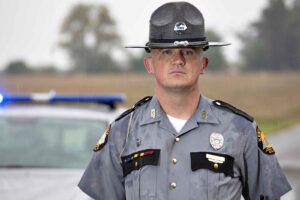Monday May 9th Woke up as the crack of dawn this morning to drive into Louisville from visiting family in Columbus. Got into town around 9 am and checked into my Airbnb off Bardstown Rd. in the Highlands. Seems like a pretty nice area, different from my stay in right in Downtown last time I […]
Nate Smallwood. Trip 1 to Louisville, March and April 2022
March 31st 2022 So here went nothing. I talked to Bob a few days ago and got the green light to head down Kentucky way and haven’t been this excited for a project in a long time. I stopped in Columbus to visit some family splitting the drive in half, a much easier 3hrs & […]
Nate Smallwood. Lexington, Kentucky, July 2022
Sunday July 3 2022 Rolled into town early this morning and started to get my bearings and the layout of the city somewhat into perspective. My only other trips for KDPP had been to Louisville – a drastically different city in many regards. Initial passes through different neighborhoods gave me an idea of places to […]
Brittany Greeson. Kentucky Documentary Photographic Project – Bluegrass, September + October 2022
9/20/2022 – Laura Poulette, Madison County Laura Poulette has always been a creative person. The daughter of two creatives and “DIY’ers,” she says she learned to be resourceful early on. She grew up in eastern Pennsylvania and originally went to school to study architecture. However, she quickly realized the school wasn’t a good fit. Her […]
Brittany Greeson. Journals: Warren, Muhlenberg and Ohio Counties. 2020
Sept 1st, 2020 Today, I returned to my alma mater, Western Kentucky University in Bowling Green, to photograph courses amid the global pandemic. I was curious to see how students were handling everyday protocol for mask wearing, distancing and how instructors would be using technology for those at home. I figured I’d be safest within […]
Reflections on Owensboro and Daviess County June 29-July 5, 2015
It was hot . . . very hot . . .when I drove into Owensboro. I had a 4:00 meeting with a US Marshall where I was going to try and get the lay of the land. I’d photographed in Owensboro 40 years ago for the original Kentucky Documentary Photographic Project, and had made several […]
Dawson Springs Tornado
The Tornado hit Dawson Springs on Friday evening December 10, 2021. It was most likely one of a number of tornados that emerged along a 200+ mile line ranging from Northeast Arkansas through central Kentucky.
Sept 1st, 2020
Today I returned to my alma mater, Western Kentucky University in Bowling Green to photograph courses amid the global pandemic. I was curious to see how students were handling everyday protocol for mask wearing, distancing and how instructors would be using technology for those at home. I covered a biochemistry lab taught by Dr. Blairanne […]
Russellville
I have always liked Russellville. It’s in Logan County. The northern section of the county is hilly, bordering, Muhlenberg County. As you go south, the land gets more level, becoming rich farmland. Russellville seemed genteel. The people were (and still are) gracious. The historic architecture is good and of interest. It was always a comfortable […]
People Working
I’m always interested in people at work. I began to think a lot about fast food workers and wonder about their lives – and so I made some efforts to photograph them. They are mostly kids and put on big smiles when you face them with a camera. The Sonic Drive In I went to was […]
Muhlenberg County Roadside Encounter
Leaving Paradise I meandered. I went to the Rochester Dam that John Prine sang about. Rochester is a small town with maybe one store a bank and a post office. I saw a dot on my Delorme Map identifying the town of Gus. My older son’s name is Gus, so I had to go there. […]
Police Work
In Paducah I arrange to ride with the Police Department. I’m paired with Officer Kelly Drew but we had a fair amount of contact with the other officers on that shift as well. Kelly amazed me with his background (broken home, alcoholic abusive father, but saved by his grandfather who guided him through his adolescence) […]









